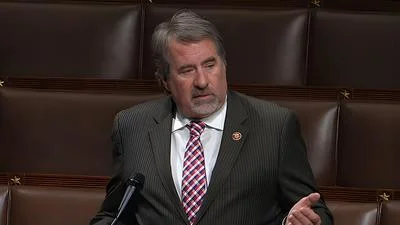The Migratory Bird Conservation Commission has approved more than $146 million to conserve or restore 242,000 acres of wetland and other upland habitats for waterfowl, shorebirds and North American birds.
According to a release by the Department of the Interior, more than $50.9 million in North American Wetlands Conservation Act (NAWCA) grants will be matched by more than $73.4 million in partner funds. Also approved by the commission was $21.7 million from the Migratory Bird Conservation Fund for land conservation in five wildlife refuges spanning four states.
“The North American Wetlands Conservation Act is among our most successful tools for the conservation of migratory birds throughout the United States and beyond our borders,” said Assistant Secretary for Parks, Fish and Wildlife Shannon Estenoz. “The investments in these locally-led conservation projects will provide essential resources to ensure the long-term survival of migratory birds for the benefit of future generations. These projects are great examples of the work we are accomplishing through the Administration’s America the Beautiful initiative, which supports locally led and locally designed conservation efforts and restoration approaches.”
The release states that stamps from the Federal Migratory Bird Hunting and Conservation will be sold to help fund the conservation of 5,401 acres for five national wildlife refuges. These funds will be used to purchase waterfowl habitat at the following national wildlife refuges:
Cat Island National Wildlife Refuge in Louisiana – $1,466,000 to acquire 548 acres.
Clarks River National Wildlife Refuge in Kentucky – $6,621,000 to acquire 2,482 acres.
Green River National Wildlife Refuge in Kentucky – $11,372,000 to acquire 1,335 acres.
Silvio O. Conte National Fish and Wildlife Refuge in New Hampshire – $1,066,450 to acquire 797 acres.
Willapa National Wildlife Refuge in Washington – $1,255,248 to acquire 239 acres.
This is known as the Duck Stamp Program and since 1934 it has provided $1.1 billion for habitat conservation in the National Wildlife Refuge System.
“Wetlands provide many economic, ecological and social benefits to the surrounding communities,” said Service Director Martha Williams. “They also provide important protections from the effects of climate change such as flooding and rising seas. NAWCA grants conserve bird populations and wetland habitat while supporting local economies and outdoor recreational opportunities, such as hunting, fishing and birdwatching.”
The North American Wetlands Conservation Act grant program runs in two cycles each year. It approves matching grants to public-private partnerships in the United States, Canada, and Mexico, according to the U.S. Fish and Wildlife Service website. Proposals are reviewed and ranked by the North American Wetlands Conservation Council (the Council) during each cycle. The Council has the authority to approve Small Grants and recommends Standard Grants projects to the Migratory Bird Conservation Commission.
According to the Fish and Wildlife Service website, the Migratory Birds Commission is also a major contributor to funding. It was created to consider and approve areas of land and/or water recommended by the Secretary of the Interior for purchase or rental, with a focus on conserving wetlands and other habitats for migratory birds. The commission also approves funding for the North American Wetlands Conservation Act grants that fund public-private collaborative projects focused on protecting large wetlands and uplands for migratory birds.





